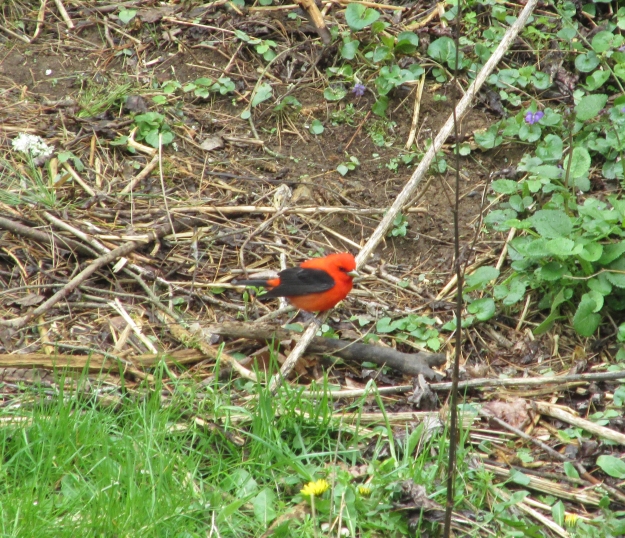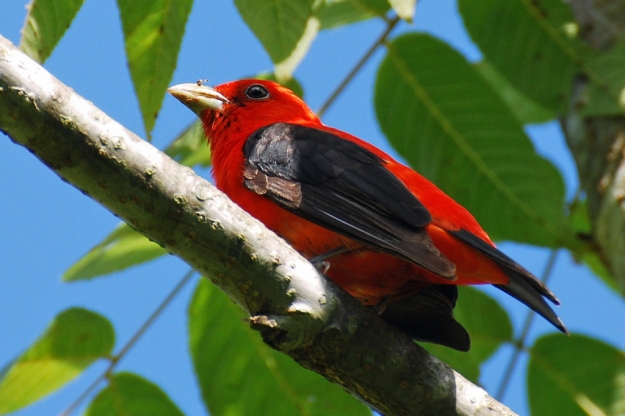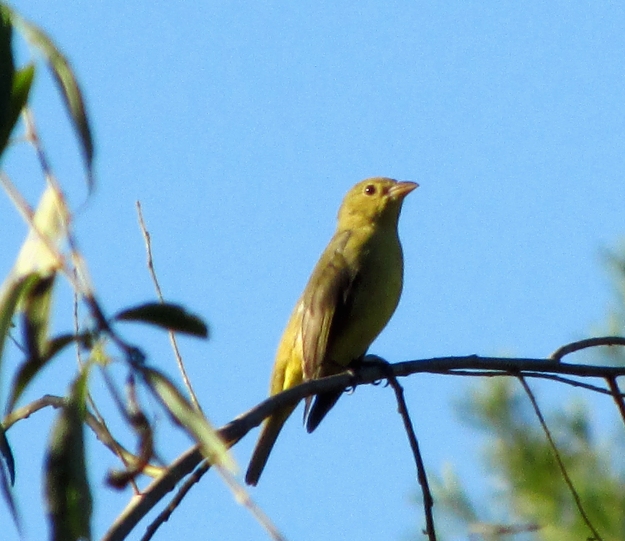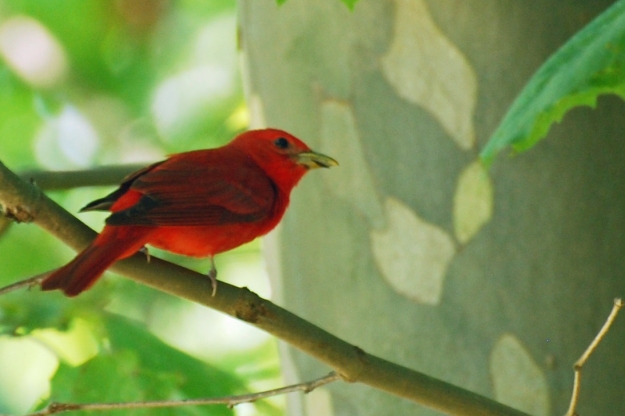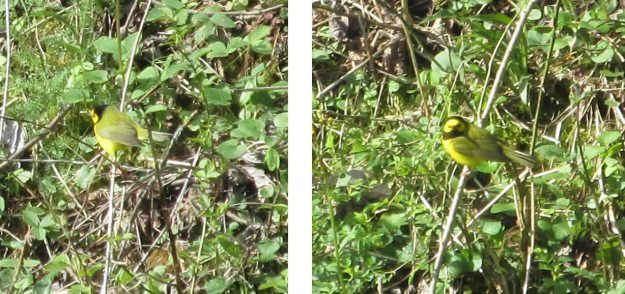
Photo Provided by Helen Whited • A male summer tanager visits a feeder during a migration stop in southwest Virginia.
Helen Whited, a resident of Richlands, Virginia, recently emailed me a photo of a feathered visitor in her yard asking for help with identification. She had already narrowed down the possibilities. “I’m thinking a tanager of some kind,” Helen wrote in her email.
When I opened Helen’s attached photo file, I recognized the plump, red bird perched on her feeder near a suet cage. I wrote an email back, informing Helen that her visitor was indeed a tanager. The summer tanager is not rare, per se, but these birds do not seem as common in the region as the related and better known scarlet tanager. Farther south, summer tanagers are much more prevalent in the spring and summer months.
Helen also reported seeing her first ruby-throated hummingbird of spring on April 25. “It’s later than usual, but they’re here,” she wrote in an email.
She added that several neighbors in Richlands, Virginia, reported seeing hummingbirds as early as April 21, but they seemed to be shunning her until the morning of April 25.
Since the last couple of columns have been about hummingbirds, I want to shift the focus this week to Helen’s other visitor.
If the casual birder or nature enthusiast is aware of the summer tanager, it’s usually as the less showy cousin of the more fiery and vibrant scarlet tanager, one of the most striking birds inhabiting woodlands in the eastern United States.
That’s a shame, for many reasons.
First and foremost, the summer tanager holds one unique distinction. The male summer tanager is the only completely red bird in North America. Other birds known for their red plumage — Northern cardinal, house finch, vermillion flycatcher — show other colors in their feathers besides red.
The strawberry-colored male summer tanager is often difficult to spot due to a propensity to keep hidden against the green leaves of the forest canopy. The website “All About Birds” describes the female as “mustard yellow” in her coloration, which is rather apt. Female summer tanagers are usually less greenish than female scarlet tanagers. The female is even harder to spot than the male, though both sexes have a very distinctive chuckling call note.
Over the years, different local spots have proven reliable for finding summer tanagers. Large trees near the Steele Creek Park Nature Center in Bristol, Tennessee, used to be a fairly dependable location for these tanagers during late spring and summer.

Early American naturalist and artist John James Audubon painted this work featuring a family of summer tanagers.
The summer tanager is classified in the genus Piranga, which includes the scarlet tanager as well as the western tanager of the states west of the Rocky Mountains. This genus also includes the flame-colored tanager, white-winged tanager and red-headed tanager. Experts now classify this genus with members of the cardinal family and have separated the Piranga tanagers from other New World tanagers.
The song of the summer tanager has been described as similar to that of the American robin. Like the scarlet tanager, the summer tanager is fond of fruit and berries, but it also eats insects, often catching them on the wing.
Confined mostly to the eastern United States during the nesting season, the summer tanager doesn’t range as far north as the scarlet tanager, making its stronghold in the Gulf and southern states.
The summer tanager’s scientific name, Piranga rubra, translates as “red bird.” It’s not really clear why this tanager acquired the word “summer” in its common name. After all, both the summer tanager and scarlet tanager are only present in North America for a brief nesting season from late April to early September.
Other birds besides tanagers are on the move as spring migration continues. Get outdoors and see what wanders into your yard or garden. To share your own observations, email me at ahoodedwarbler@aol.com. I’m also on Facebook.
Photo Courtesy of Jean Potter • The summer tanager is the only all-red bird in North America. It is less common in Northeast Tennessee than the related scarlet tanager.




